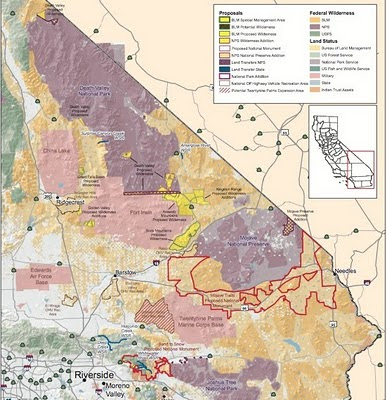Opposition to Monuments Based on Misinformation

A majority of Californians have expressed support for three new monuments proposed for California's desert and under consideration by the President. Voices opposing the designation of new national monuments, however, appear to be driven by misinformation and a distorted faith in Congress to act as a responsible steward of our wildlands. They claim that conservation has run amok, that monument designations will lock out the public, and that only Congress should decide which lands to protect. Tyrannical Conservation Designations? The first claim - that conservation is some oppressive land management regime that has run amok - is relatively easy to dispute. National Parks, monuments, and wilderness areas - wildlands that are protected from most types of industrial development - account for about 4% of the total land area of the United States. With that number in mind, consider that we are in the midst of the sixth mass extinction of wil...
.jpg)

